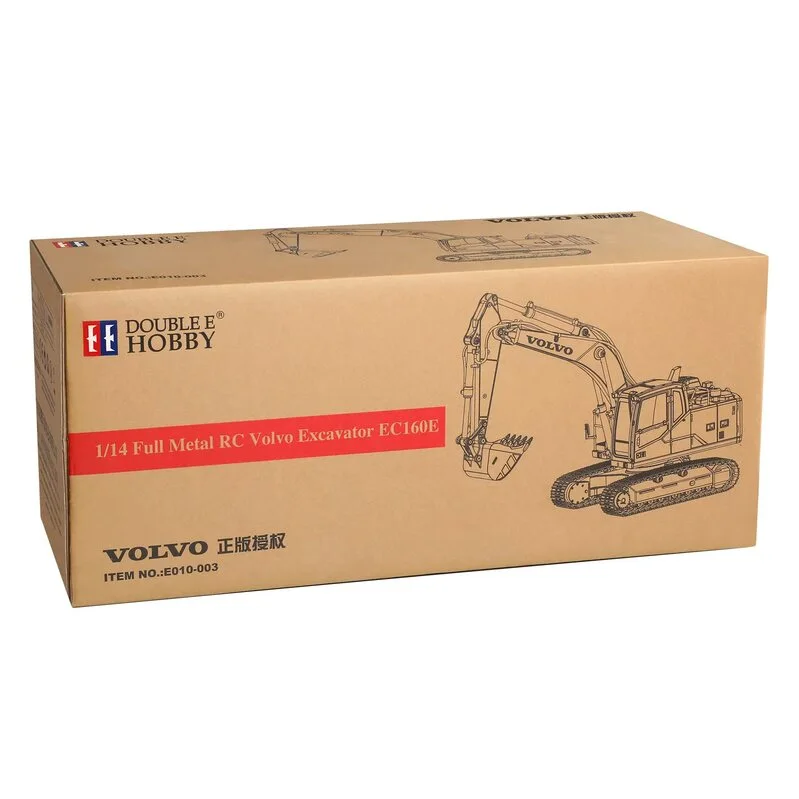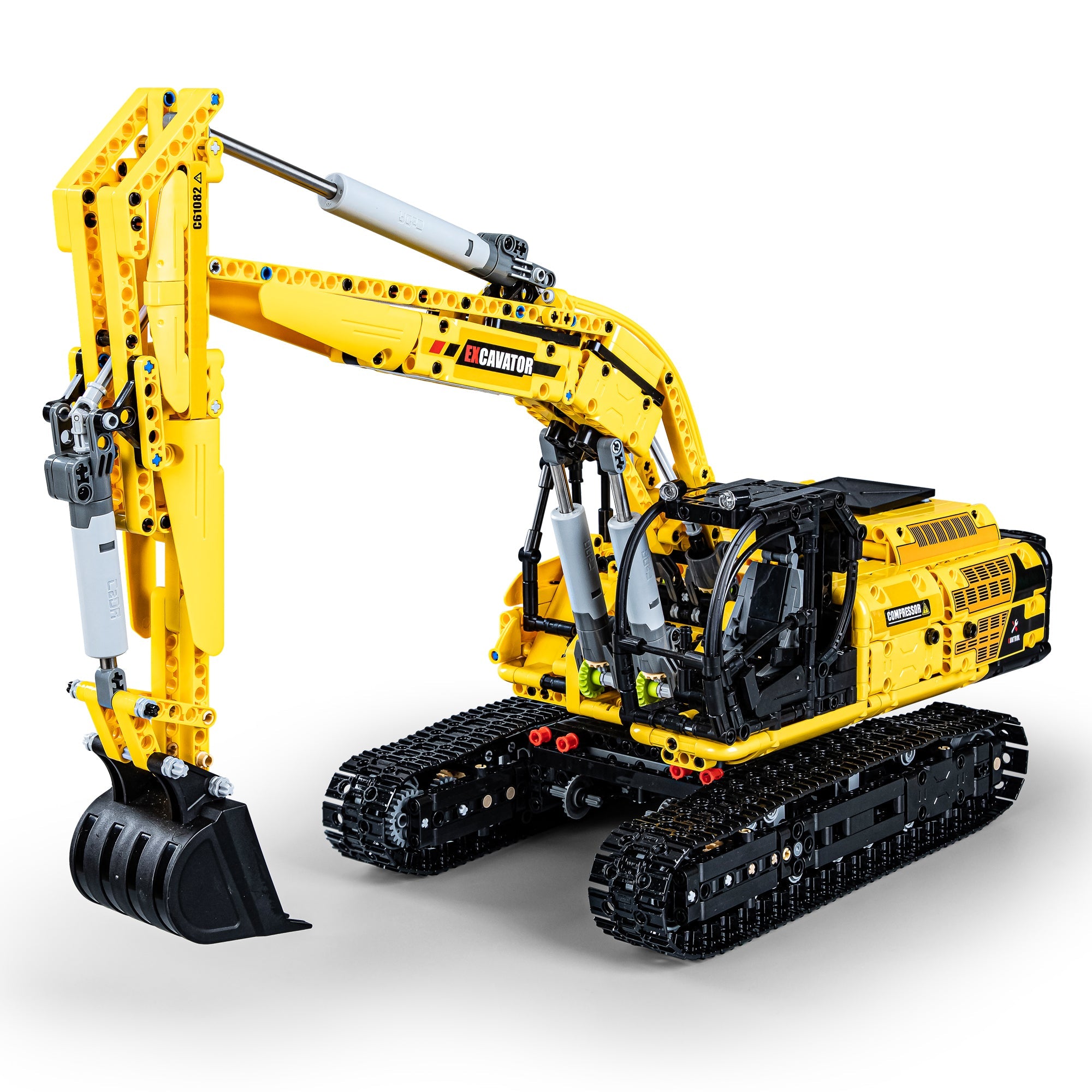The Vital Functions of Excavator That Make It a Must-Have Device
Excavators are crucial in the building and construction and landscape design industries. Their functional add-ons enable a range of jobs, from excavating to demolition. Additionally, they boast remarkable excavating deepness and reach, powered by robust engines. Operator comfort and compact designs improve use in numerous settings. What absolutely sets excavators apart are their innovative hydraulic systems and resilience. Understanding these features can make clear why they are thought about vital devices on any job website.
Versatile Attachments for Improved Capability
Although excavators are powerful equipments by themselves, the addition of functional attachments greatly enhances their performance. These attachments transform a common excavator into a multi-purpose tool, ideal for a range of tasks. Buckets, for example, come in numerous sizes and shapes, making it possible for drivers to dig, scoop, and move materials efficiently. Hydraulic thumbs can be included for improved gripping and handling of bulky things, such as logs or rocks.Furthermore, specialized add-ons like breakers and augers enable exploration and demolition work, expanding the excavator's utility on building and construction sites. remote control excavator. Grapples are an additional alternative, ideal for moving and sorting debris. This flexibility not only raises efficiency yet likewise minimizes the need for numerous equipments, conserving time and costs. By outfitting excavators with the right attachments, drivers can tackle varied projects, making them important in the building industry
Superior Digging Depth and Get To
Excavators are developed with premium digging depth and reach, enabling them to steer in tight spaces and accessibility hard-to-reach locations. This ability is critical for numerous building and excavation jobs, where typical equipment may fall brief. With flexible boom arms and extendable tracks, excavators can conveniently navigate uneven terrain while keeping stability.The excavating deepness can differ considerably among models, often varying from 10 to 25 feet, relying on the design and purpose. This attribute makes it possible for drivers to excavate structures, trenches, and various other deep structures successfully. Additionally, the reach of an excavator enables for specific excavating and product handling without repositioning the maker frequently, conserving time and labor costs.Ultimately, the remarkable excavating depth and reach of excavators make them vital for professionals seeking to complete complicated tasks with accuracy and efficiency. Their flexibility improves efficiency on task sites, showcasing them as a necessary tool in modern construction.
Powerful Engine Performance

When it comes to performance and performance on construction websites, effective engine efficiency plays a critical role in the capacities of an excavator. A durable engine produces substantial horse power, allowing the equipment to deal with durable jobs with ease - remote control excavator. This stamina translates right into faster cycle times, allowing operators to full projects extra quickly.Additionally, powerful engines offer the required torque to handle challenging surfaces and varied loads, making certain that the excavator can execute successfully under different conditions. Whether it is lifting, excavating, or relocating materials, the engine's performance straight influences the general operational performance of the machine.Furthermore, developments in engine technology have resulted in enhanced gas effectiveness, decreasing operational expenses while maintaining power output. Eventually, the engine's efficiency functions as the foundation of an excavator, attesting its standing as an essential tool in the building and construction industry
Advanced Hydraulic Equipments

Improved Raising Capacity
A considerable enhancement in lifting capacity can be credited to advanced hydraulic systems found in contemporary excavators. These systems make use of high-pressure fluid to create higher force, enabling drivers to lift much heavier loads with simplicity. The engineering behind these hydraulics assurances peak efficiency, giving an outstanding power-to-weight proportion that enhances overall efficiency. Consequently, excavators can tackle requiring tasks, such as raising large materials or equipment, without compromising stability. Additionally, the durable style of hydraulic components adds to raised sturdiness and integrity, making them ideal for various building and construction environments. This enhanced lifting capability not only reduces the moment required for tasks yet additionally reduces the demand for extra equipment, showing crucial for both efficiency and cost-effectiveness in the building industry.
Enhanced Accuracy Control
Although conventional excavators typically dealt with precision, modern hydraulic systems have actually changed control mechanisms, allowing drivers to execute jobs with remarkable precision. that site These innovative systems utilize symmetrical control valves that enable smoother and extra responsive motions, substantially decreasing the margin for mistake. Operators can currently carefully tune the excavator's motions, making it simpler to navigate limited spaces and take care of delicate materials. Boosted feedback systems even more inform operators of real-time efficiency, making certain perfect control between the device and operator. This boosted precision not only boosts efficiency yet also enhances safety on task sites, reducing the danger of crashes. Consequently, modern excavators furnished with innovative hydraulic systems are important tools for building and construction and excavation projects requiring careful accuracy.
Driver Comfort and Exposure
Driver comfort and visibility are crucial components in the layout of contemporary excavators (remote control excavator). Attributes such as ergonomic seat style, improved exposure choices, and effective control formats considerably boost the driver's experience and productivity. Focusing on these facets warranties that operators can work effectively and safely in various problems
Ergonomic Seat Style
Comfort and presence are paramount in excavator layout, with the ergonomic seat playing an essential function in improving the driver's experience. An ergonomic seat is crafted to support the operator's body, decreasing tiredness during lengthy hours of procedure. Flexible functions, such as seat height, back-rest angle, and lumbar support, provide to individual choices and advertise excellent pose. These adjustments improve comfort and make it possible for the driver to preserve concentrate on jobs without pain. Furthermore, a well-designed seat can give better lateral assistance, enabling smoother handling when the excavator functions. This thoughtful layout not just increases efficiency yet additionally contributes to overall safety and security, ensuring that drivers have a peek at these guys can do their duties effectively and effectively.
Improved Exposure Features
The layout of an excavator extends past simply the seat, with enhanced visibility functions playing a considerable role in operator convenience and general safety and security. Huge home windows and purposefully positioned mirrors supply drivers with a clear sight of their surroundings, reducing unseen areas. This layout factor to consider permits for far better spatial recognition, which is crucial in active work settings. Furthermore, many excavators integrate rearview electronic cameras and advanced tracking systems that aid operators in steering limited rooms. The assimilation of these visibility features not just promotes security yet also lowers driver tiredness by allowing less complicated monitoring of job areas. Inevitably, boosted visibility adds to more effective procedures and helps guarantee that excavators can perform their tasks successfully and safely.
Control Layout Performance
While handling facility work sites, an effective control format greatly improves both operator comfort and presence. A properly designed control configuration guarantees that operators can access essential features with very little initiative, minimizing exhaustion during lengthy hours. Ergonomic joystick placements and user-friendly button arrangements enable for seamless procedure, allowing drivers to maintain concentrate on the job available. Furthermore, clear presence of both the workplace and the control board is essential for safety and security and precision. Modern excavators frequently include flexible seating and control settings to fit various driver preferences, even more boosting comfort. Inevitably, an attentively made control design not only boosts productivity but likewise fosters a much safer working environment by enabling operators to react promptly to altering problems.
Compact Layout for Urban Environments
As city building sites commonly face area restrictions, a compact design ends up being vital for excavators operating in these atmospheres. These devices are crafted to navigate tight spaces, enabling efficient maneuverability in congested work sites. A minimized impact allows them to function closely to existing frameworks, reducing disturbance and maximizing productivity.The portable style often consists of much shorter tracks and a tighter transforming span, facilitating operation in slim alleys and confined locations. Light-weight products contribute to reduce of transportation, making it less complex to relocate the excavator from one location to another within the city landscape.Additionally, many portable excavators are equipped with features such as flexible accessories and extendable arms, improving their capability while maintaining a tiny dimension. This adaptability enables drivers to take on a variety of jobs, from excavating to demolition, all while fitting effortlessly into the restrictions of city environments.

Sturdiness and Upkeep Considerations
Longevity stands as an important consider the efficiency and durability of excavators, particularly in requiring urban settings. These equipments go through strenuous problems, consisting of differing dirt types, extreme temperatures, and high-frequency usage. Top quality materials and durable building and construction are necessary for making sure that excavators can withstand these difficulties without endangering functionality.Regular maintenance is just as vital in preserving sturdiness. Set up evaluations, timely oil changes, and the substitute of worn parts contribute significantly to an excavator's life-span. Operators has to also focus on hydraulic systems, tracks, and undercarriages, as these components typically bear the force of wear and tear.Investing in resilient excavators with extensive upkeep plans boosts reliability and reduces downtime, ultimately causing increased efficiency on building and construction websites. Comprehending the interplay in between toughness and maintenance is vital for anybody thinking about the acquisition of an excavator for metropolitan projects.
Often Asked Inquiries
How Do Excavators Contrast to Other Building Tools?
Excavators stand apart amongst building and construction devices due to their convenience, allowing jobs such as lifting, digging, and grading. Compared to others, their hydraulic abilities supply better efficiency and power, making them essential on numerous job sites.
What Security Features Are Included in Modern Excavators?
Modern excavators incorporate various safety and security functions, including rollover defense systems, alarms, and advanced presence improvements. These components interact to reduce risks, making certain operator security while enhancing effectiveness on building and construction websites and other requiring environments.

Can Excavators Be Utilized in Wintertime Conditions?
Excavators can indeed be utilized in winter season problems, supplied they are geared up with suitable winter season add-ons and preventative measures are taken. Proper upkeep and adjustments enhance their performance, ensuring efficient operation regardless of tough weather scenarios.
What Is the Typical Life Expectancy of an Excavator?
The typical life-span of an excavator normally ranges from 7,000 to 10,000 hours of operation. This period can greatly depend upon upkeep methods, running conditions, and the specific design's toughness and style features.
Exactly how Do I Pick the Right Excavator Size for My Project?
Choosing the go to my site appropriate excavator size involves reviewing task range, site conditions, and product types. Take into consideration variables like reach, deepness requirements, and weight ability to guarantee optimal efficiency and safety throughout procedure. Dimension matters considerably in project success. Furthermore, the reach of an excavator allows for precise excavating and material handling without rearranging the device often, saving time and labor costs.Ultimately, the premium digging depth and reach of excavators make them vital for specialists seeking to complete complex tasks with accuracy and performance. Convenience and presence are critical in excavator design, with the ergonomic seat playing an essential duty in enhancing the driver's experience. The layout of an excavator expands beyond just the seat, with enhanced exposure features playing a considerable function in operator convenience and general security. Modern excavators frequently integrate adjustable seats and control settings to suit various operator preferences, even more enhancing convenience. Light-weight products add to relieve of transportation, making it easier to relocate the excavator from one location to one more within the metropolitan landscape.Additionally, numerous compact excavators are outfitted with attributes such as extendable arms and versatile attachments, improving their performance while maintaining a little size.